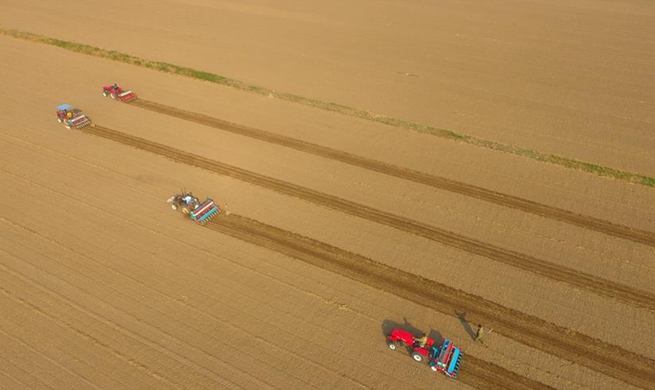WASHINGTON, Oct. 15 (Xinhua) -- American researchers have found the oldest evidence for animal life, dating back at least 100 million years before the famous Cambrian explosion of animal fossils.
The study published on Monday in the journal Nature Ecology & Evolution described a steroid compound produced only by sponges that are among the earliest forms of animal life.
Researchers at the University of California, Riverside, tracked molecular signs of animal life, called biomarkers, as far back as 660 to 635 million years ago, and they found the compound in ancient rocks and oils from Oman, Siberia, and India.
"Molecular fossils are important for tracking early animals since the first sponges were probably very small, did not contain a skeleton, and did not leave a well-preserved or easily recognizable body fossil record," said the first author Alex Zumberge.
"We have been looking for distinctive and stable biomarkers that indicate the existence of sponges and other early animals," said Zumberge, a doctoral student working at the lab of Gordon Love who led the study.
The biomarker they identified has a unique structure that is currently only known to be synthesized by certain species of modern sponges called demosponges, according to the study.
"This steroid biomarker is the first evidence that demosponges, and hence multicellular animals, were thriving in ancient seas at least as far back as 635 million years ago," said Zumberge.

















